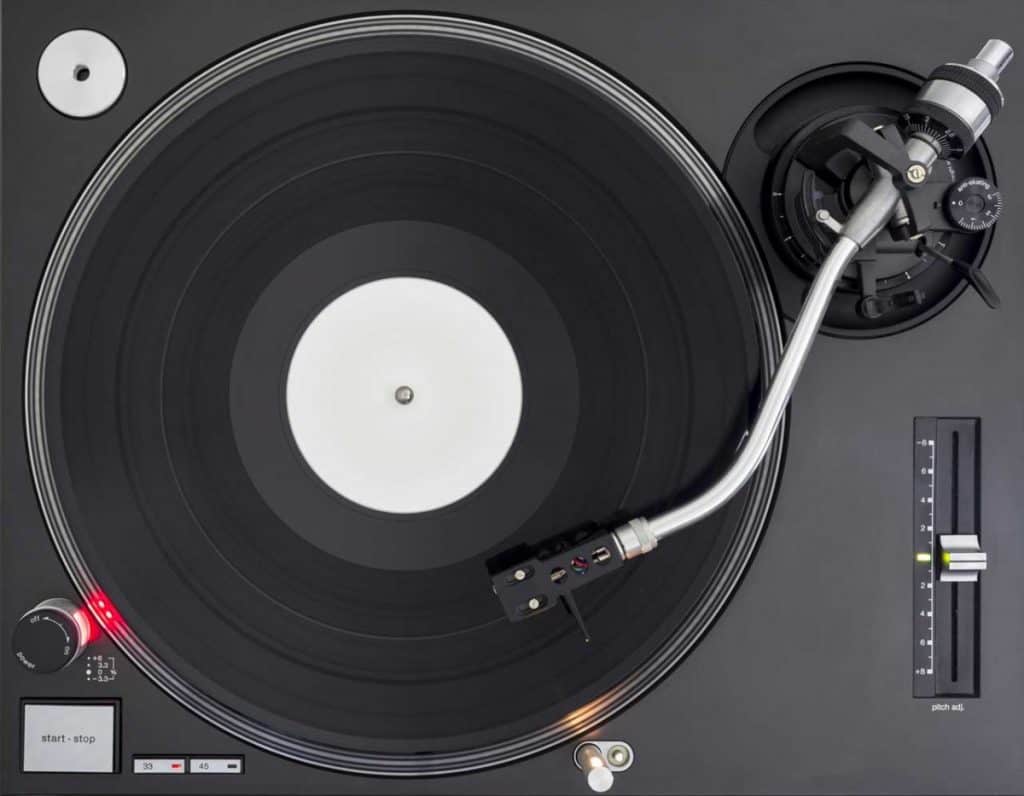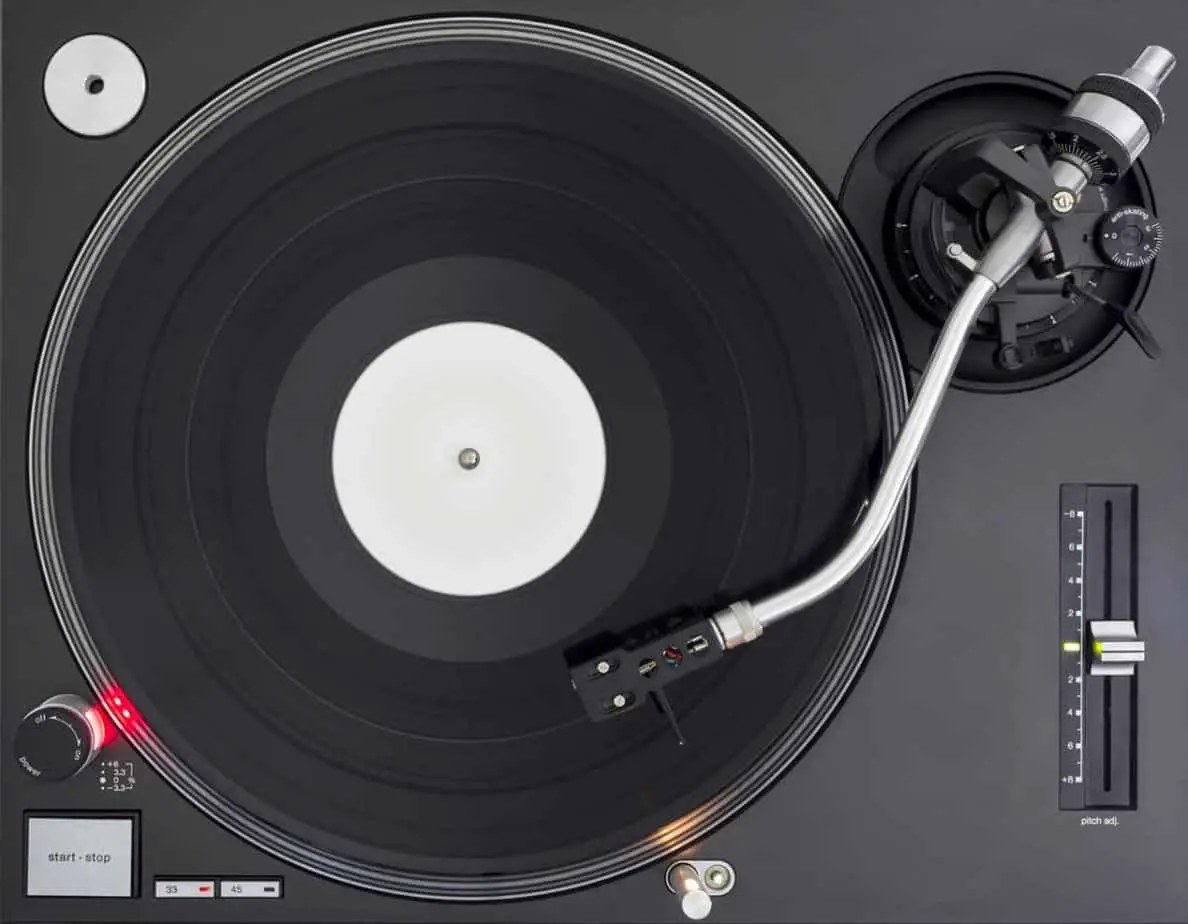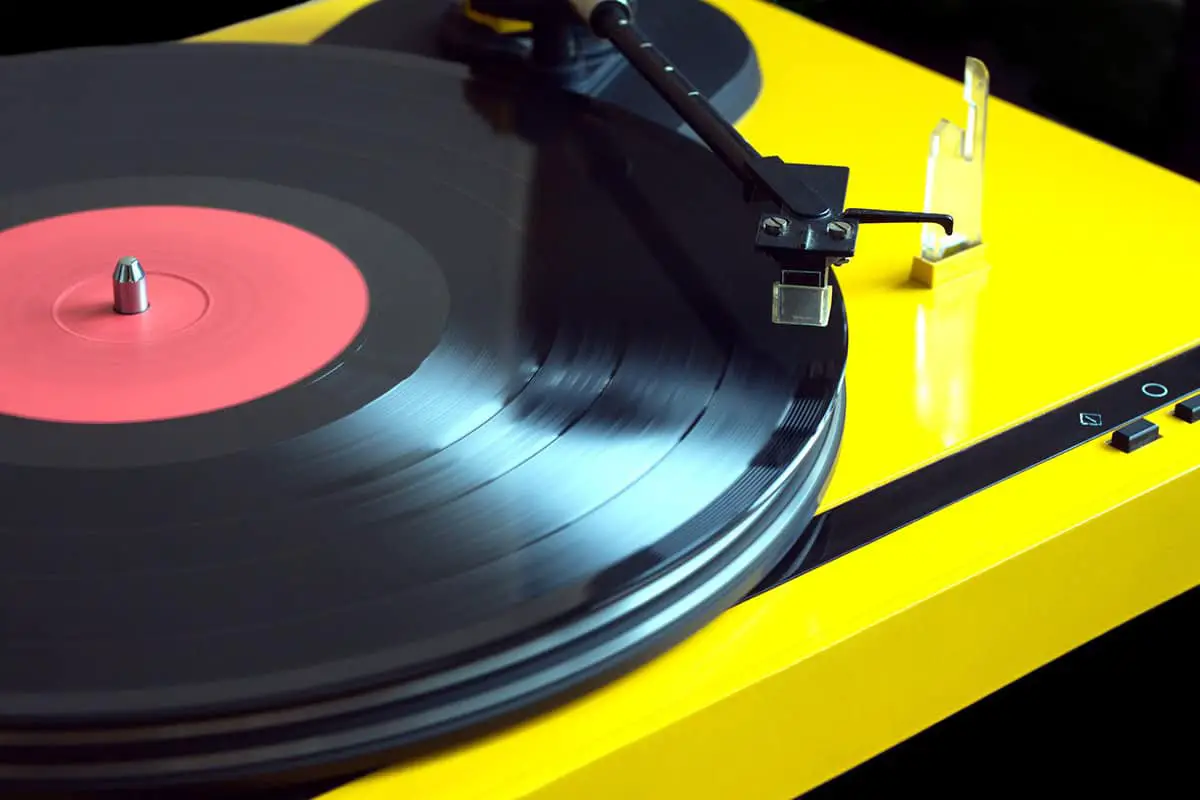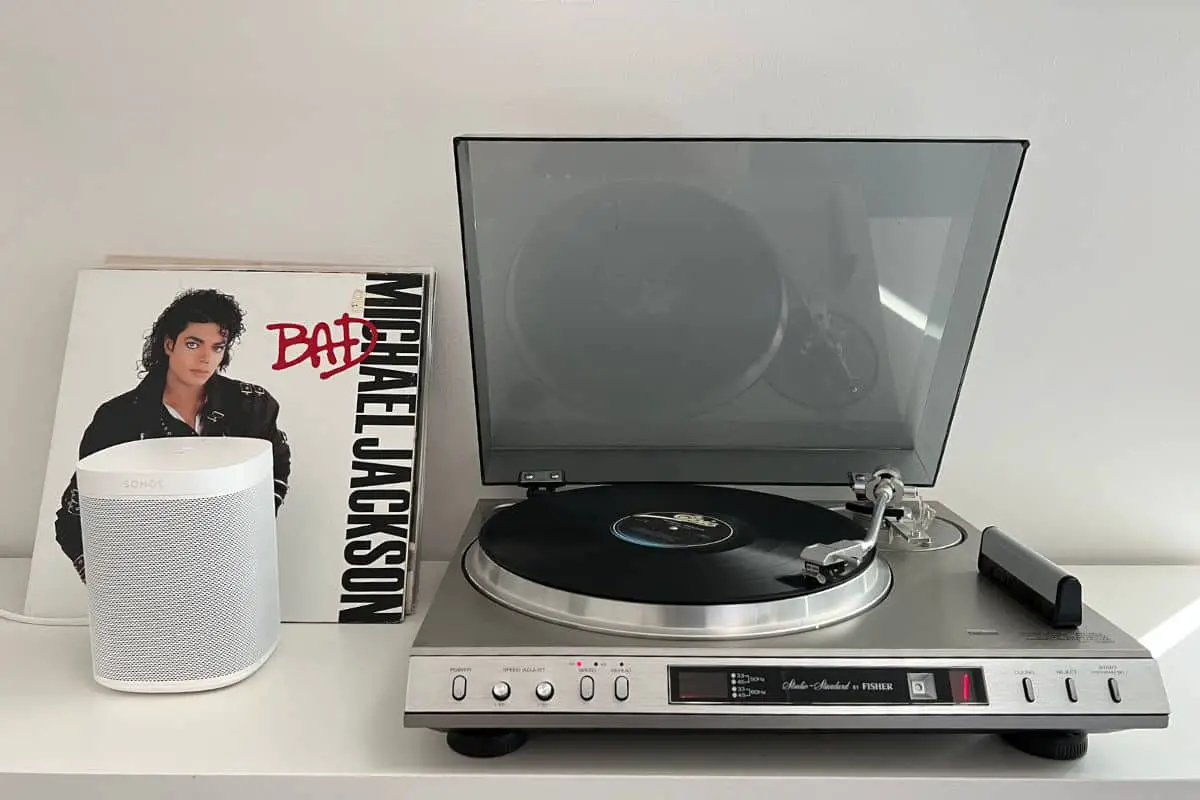This post contains affiliate links.
What is pitch control on a turntable? If you own some vinyl records and a record player, you probably heard of the term pitch control. However, it is vital to understand the exact definition and the importance of this term.
Pitch control on a turntable is an option that allows users to deviate from a standard speed. By controlling the pitch, you will be able to choose between three RPMs:
- 33rpm
- 45rpm
- 78rpm
Moreover, pitch control allows you to choose the tempo of your record. (source)
It is essential to understand what pitch control on a turntable is. Additionally, by knowing how to control your turntable’s pitch, you can easily adjust it to the correct speed when it goes too slow or too fast.
Table of Contents
What Is Pitch Control On A Turntable?

Many record player owners are familiar with the idea of pitch control. On the other hand, some people know the idea but are not entirely familiar with its exact explanation. So, what is pitch control on a turntable?
A turntable pitch control is a mechanism that allows you to control the speed of the equipment. For record players, changing the playback speed will inevitably change its pitch. Slow playback speed means lower pitch, while a fast speed means high pitch. So, you can say that pitch control and speed adjustment are the same mechanisms of record players.
Moreover, vinyl records play at different speeds, depending on the composition of the song. The typical speed that a vinyl record plays at is 33, 45, 78 RPM, or rotations per minute.
However, it is important to note that vinyl records with 78 RPM are rarer than the standard 45 RPM and 33 RPM these days.
Moreover, there are times when a turntable will have a playback speed that is too fast or too slow. If such a problem happens to your record player, you can use the pitch control option to correct the speed. Knowing what pitch control is and how to change a turntable’s pitch will allow you to improve the audio quality produced by your record player. (source)
How Do You Set The Pitch On A Turntable?
Now that you know pitch control on a turntable, you will be able to fix your record player in case its speed becomes too fast or too slow. Setting the pitch of your record player is not a topic often talked about. However, the process is relatively easy.
If you are unsure where you should start, four simple steps can help you change your record player’s pitch.
- Test the speed of your record player
Before tuning the speed of your turntable, you first need to know how fast or slow the playback is. To do this task, you can perform two methods:
- compare the vinyl record sound to the digital playback
- perform a stroboscopic disk check
Compare The Record Player Sound With Digital Playback
Comparing the vinyl record and digital audio is the easiest way to determine if your player needs pitch control. Get a digital copy of the song you are trying to play on the turntable to do this test. You can use any music streaming application, such as Apple Music, Spotify, and iTunes, to access a digital record of that particular song.
Next, prepare your vinyl record and turntable for playback. Now, play the turntable and digital audio side by side. Listen carefully for lower-sounding pitch and slower sound throughout the song.
It is important to note that you will base the correct pitch and speed on the digital version of the song. So, if you find that the vinyl record’s pitch is off, that indicates that your record player is playing slow. Since you know pitch control on a turntable, you should be able to fix the issue quickly.
Perform A Stroboscopic Disk Check
Comparing the vinyl record to a digital playback of a song is easy. However, the human ear can only pick up so much. For this reason, you should perform a stroboscopic disk check for a visual approach.
This method involves using a cardboard disc with equally spaced markings around the edge. You place it on the record player and turn the equipment on. If the turntable’s pitch is correct, the markings on the edges of the cardboard should appear as an unmoving circle. But if your turntable’s pitch is off, the markings will appear like they are spinning along with the turntable. (source)
- Give your turntable a good clean
After the speed test, the next thing you want to do is give your turntable a good clean. For this process, you will need:
- carbon fiber brush
- microfiber cloth
- lubricant
Use the brush to remove dust buildup and static charge on a record. After some thorough brushing, you can use a microfiber cloth to clean your record deeply. Finally, lubricate the moving parts of the turntable to ensure that they move smoothly.
This way, the record player will function well as you change its pitch. Since you already know pitch control on a turntable, tuning the equipment will be relatively easy. (source)
Related Article:
- Check the belt
A loose belt can cause your turntable to make a high-pitched sound. If you know pitch control on a turntable, you should also be aware that a change in the pitch can result from problems with the belt.
If you find out that your turntable is spinning slower than it should, you may have to check the belt to see if it became stretched out and loose. The culprit behind a record player that is too slow is a loose belt most of the time. The reason is that a loose belt no longer has enough grip on the pulley, affecting the equipment’s audio quality.
If the belt has indeed become loose, you can either shrink it back to size or replace it.
In boiling the belt, you need to have a container to soak it in hot water. Next, boil a cup of water and pour it into the container.
Finally, let the belt soak for about five to eight minutes. Moreover, if boiling the belt did not work for you, the quickest solution is to replace it altogether. Belts for turntables are quite inexpensive and easy to replace. For this reason, you will not have a problem changing the belt of your record player.
Related articles:
- Perform fine-tuning adjustments
After finding out that your turntable has an incorrect speed and replaced the belt, but nothing happened, the last thing you can do is adjust the tuning.
To perform some fine-tuning adjustments, you may need to look for your record player’s manual. But if you cannot find your manual anymore, you can look for a similar record player online and access its manual.
First, you will need to find the adjustment screws of your turntable. You can sometimes find them right under the platter, but some turntables have their screws underneath.
Once you find the adjustment screws, you need to ensure that the turntable is on a flat and leveled surface before making any adjustments.
If you need to slow down the turntable, you need to turn the screws clockwise. On the other hand, turning them counterclockwise will slow down the platter.
Moreover, you need to understand that fine-tuning adjustments are a trial and error process. Meaning, it is quite a challenge to get your turntable to an entirely accurate playing speed. But always make sure you run your record player on speed tests in between adjustments. This way, you will be able to fine-tune as needed. If you understand pitch control on a turntable, you should be able to fine-tune it without hassle. (source)
Sources
- Ben James, The Turntable DJ, Google Scholar, https://books.google.com.ph/books?id=vTk2IFj6g68C&pg%/ Accessed September 11, 2021.
- Stroboscope, Wikipedia, The Free Encyclopedia, https://en.wikipedia.org/wiki/Stroboscope
- Kat Bein, How To Clean And Care For Your Turntable Stylus, Discogs.Com, https://blog.discogs.com/en/how-to-clean-and-care-for-your-turntable-stylus/ Accessed September 11, 2021.
- Martin Do, et. al, Vinyl Player 2.0, Google Scholar, https://www.ece.ucf.edu/seniordesign/fa2017sp2018/g15/documentation/Final_Report.pdf/ Accessed September 11, 2021.
VacationVinyl.com is a participant in the Amazon Services LLC Associates Program, an affiliate advertising program designed to provide a means for sites to earn advertising fees by advertising and linking to Amazon.com. We also participate in other affiliate programs which compensate us for referring traffic.





